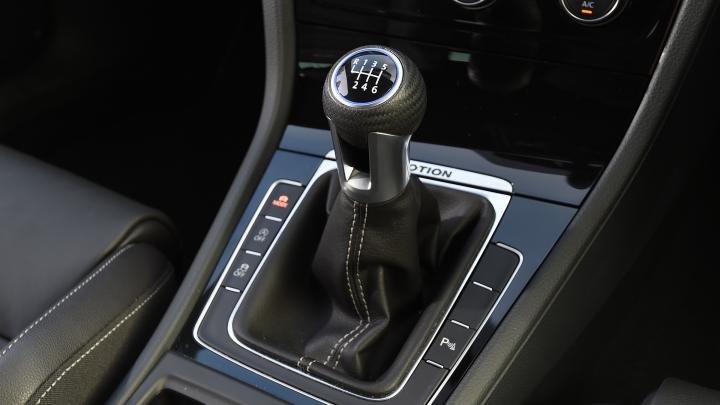There are fewer and fewer cars with a traditional gearbox every year. Motorists who appreciate comfort and want not to strain themselves behind the wheel choose automatic transmissions. Meanwhile, not all cars with two pedals are equipped with traditional “automatic machines”. Trying to overtake competitors, automakers have long been installing not only automatic transmissions on their cars, but also other transmissions – variators and “robots”. Most motorists, who are not used to understanding technical subtleties, do not see the difference between them. However, each type of transmission has its advantages and disadvantages.
1. A robotic box with one clutch.
Now even compact models like Lada Vesta or Smart fortwo can save the driver from self-shifting gears. But when buying them, it is important to understand that the gearshift will not be “automatic”, but a robotic transmission with one clutch. Considering that it is based on a conventional manual transmission, the resource of such a transmission promises to be quite high. In addition, the “robot” with one clutch is relatively simple and cheap to repair, which is why it is registered on inexpensive cars.
But are you ready to put up with the traditional disadvantages of single-clutch robotic transmissions? It is enough to read at least a couple of test drives of the Lada Vesta sedan with a robotic AMT box to understand that in urban conditions such a box is not a match for traditional “automata”. Jerks during switching, rolling the car back at the start, not always logical switching are the main, but not all the disadvantages of “robots”. And the clutch resource actually turns out not to be as large as you initially expect. Naturally, the transmission of the transmission is different and it is far from the fact that all “robots” with one clutch behave the same as the AMT box on the Vesta, but to some extent the disadvantages described above are inherent in them.
2. A robotic box with two clutches.
The “robot” with two clutches shifts gears an order of magnitude faster. It is not surprising that such transmissions have long been found on Audi, Volkswagen, Mercedes Benz, BMW cars. In addition, two-disc “robots” allow you to save fuel, which is important for prudent Europeans. That’s just the reliability issues in this case usually fade into the background. When it comes to a new car under warranty, it seems quite logical. In which case, all costs will be borne by the dealer. But in the case of used cars, “robots” with two clutches are a time bomb. The extremely complex design of such a transmission often requires repair after 50 thousand kilometers of mileage. The example of the Volkswagen group is especially indicative, the DSG box from which first collected a lot of flattering reviews, and then mercilessly criticized for too low a resource. Only a few years later, when the Germans mastered “robots” with “wet” clutch discs, DSG boxes became more or less reliable.
3. The variator.
Variators are especially loved by Japanese automakers. This type of transmission, namely the V-belt variator, can be found on the popular Nissan Qashqai, Nissan X-Trail, Mitsubishi Outlander. The wedge-chain CVT is installed on cars such as the Audi A6 and Subaru Forester. Smooth switching has always been considered the main advantage of variators. Although it is fundamentally wrong to talk about switching as such. The CVT is essentially a continuously variable transmission. Although following the lead of motorists who do not like frankly trolleybus acceleration, accompanied by the constant sound of the engine running at the same speed, manufacturers have taught their variators “how to shift gears.” Thanks to the virtual steps, many variators are now completely indistinguishable from perfectly tuned automatic transmissions.
As for the disadvantages of variators, they include a limited belt life. It usually does not exceed 150 thousand kilometers, which should be taken into account when buying a used car. The chain in the wedge-chain variator holds longer, but it may also require replacement. Especially if the variator is subjected to increased loads. Considering that variators are often installed on crossovers, which theoretically can move on, for example, deep sand, this happens quite often.
4. Automatic transmission.
Almost all automakers offer a traditional “automatic” as an alternative to “mechanics” or a robotic transmission. Ten years ago, most automatic transmissions boasted only 4-5 gears, while now 6-7 steps have already become the norm. Moreover, even a 9–speed automatic transmission can already be found on the most expensive cars. The proven design and the ability to “digest” high torque allows you to combine “automatic machines” with almost all engines. It is also important in our operating conditions that the automatic transmission allows you to slip a little.
Of the disadvantages of the “automatic”, it can be noted that the efficiency is slightly lower in comparison with the variator. And, of course, to switch gears absolutely imperceptibly, that is, to become like a variator, automatic transmissions have not yet learned. As for reliability, it is unlikely to bring all automatic transmissions to the same denominator. The famous French DP0 box, installed on many Renault, Peugeot and Citroen models, sometimes could not withstand even 80 thousand kilometers. Its exact opposite is the “automata” of Jatco. With proper operation, problems with them begin much later.
Which type of transmission should I give preference to? If you use the car only during the warranty period, then a “robot” with two clutches seems to be the best choice. If you are primarily interested in reliability, then it is better to stop at a variator or a conventional automatic transmission. As for the “robot” with one clutch, so far it has too many disadvantages. Whether to put up with them or not is up to you.
Choose the appropriate spare parts
Avaruosad.ee – online auto parts store
Need spare parts for your car? Call for free consultation:
- +372 56 812 812
- info@avaruosad.ee


